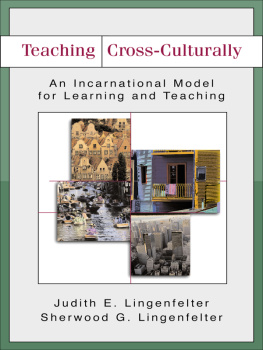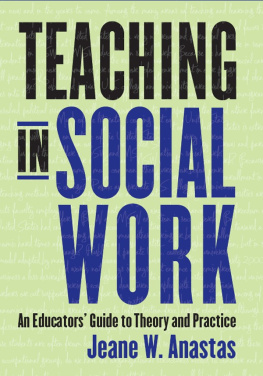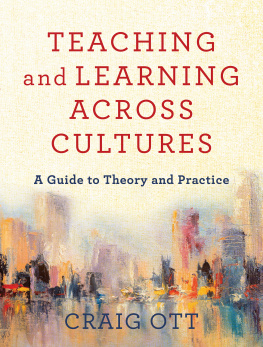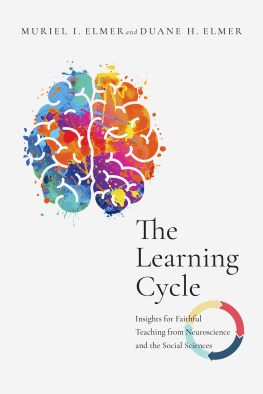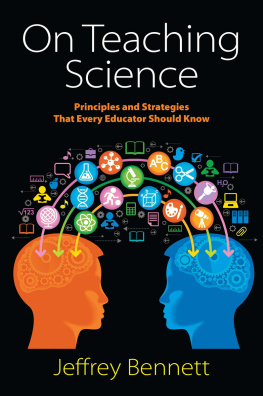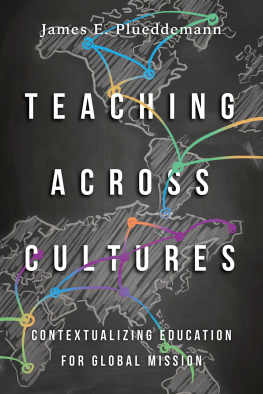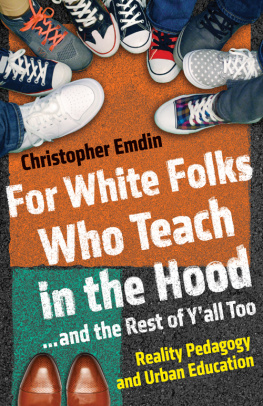Judith E. Lingenfelter - Teaching Cross-Culturally: An Incarnational Model for Learning and Teaching
Here you can read online Judith E. Lingenfelter - Teaching Cross-Culturally: An Incarnational Model for Learning and Teaching full text of the book (entire story) in english for free. Download pdf and epub, get meaning, cover and reviews about this ebook. year: 2003, publisher: Baker Publishing Group, genre: Religion. Description of the work, (preface) as well as reviews are available. Best literature library LitArk.com created for fans of good reading and offers a wide selection of genres:
Romance novel
Science fiction
Adventure
Detective
Science
History
Home and family
Prose
Art
Politics
Computer
Non-fiction
Religion
Business
Children
Humor
Choose a favorite category and find really read worthwhile books. Enjoy immersion in the world of imagination, feel the emotions of the characters or learn something new for yourself, make an fascinating discovery.
- Book:Teaching Cross-Culturally: An Incarnational Model for Learning and Teaching
- Author:
- Publisher:Baker Publishing Group
- Genre:
- Year:2003
- Rating:3 / 5
- Favourites:Add to favourites
- Your mark:
- 60
- 1
- 2
- 3
- 4
- 5
Teaching Cross-Culturally: An Incarnational Model for Learning and Teaching: summary, description and annotation
We offer to read an annotation, description, summary or preface (depends on what the author of the book "Teaching Cross-Culturally: An Incarnational Model for Learning and Teaching" wrote himself). If you haven't found the necessary information about the book — write in the comments, we will try to find it.
Teaching Cross-Culturally: An Incarnational Model for Learning and Teaching — read online for free the complete book (whole text) full work
Below is the text of the book, divided by pages. System saving the place of the last page read, allows you to conveniently read the book "Teaching Cross-Culturally: An Incarnational Model for Learning and Teaching" online for free, without having to search again every time where you left off. Put a bookmark, and you can go to the page where you finished reading at any time.
Font size:
Interval:
Bookmark:
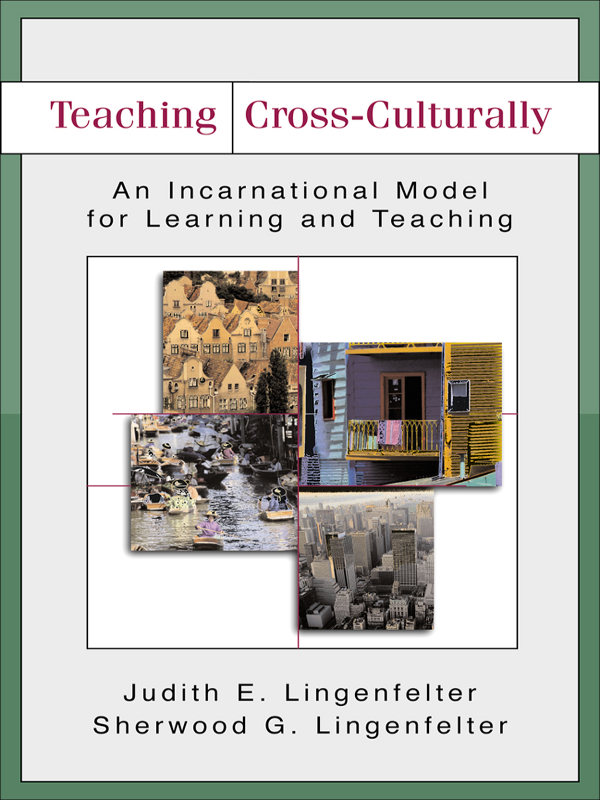
Teaching
Cross-Culturally
Teaching
Cross-Culturally
An Incarnational Model for Learning and Teaching
Judith E. Lingenfelter
and
Sherwood G. Lingenfelter

2003 by Judith E. Lingenfelter and Sherwood G. Lingenfelter
Published by Baker Academic
A division of Baker Book House Company
P.O. Box 6287, Grand Rapids, MI 49516-6287
www.bakeracademic.com
E-book edition created 2011
All rights reserved. No part of this publication may be reproduced, stored in a retrieval system, or transmitted in any form or by any meansfor example, electronic, photocopy, recordingwithout the prior written permission of the publisher. The only exception is brief quotations in printed reviews.
ISBN 978-1-5855-8308-9
Library of Congress Cataloging-in-Publication Data is on file at the Library of Congress, Washington, DC.
Unless otherwise indicated, Scripture is from the Holy Bible, New International Version. NIV. Copyright 1973, 1978, 1984 by Biblica, Inc. Used by permission of Zondervan. All rights reserved worldwide. www.zondervan.com
Scripture marked KJV is from the King James Version of the Bible.
Scripture marked NLT is from the Holy Bible, New Living Translation, copyright 1996. Used by permission of Tyndale House Publishers, Inc., Wheaton, IL 60189. All rights reserved.
Scripture marked NJB is from THE NEW JERUSALEM BIBLE, copyright 1985 by Darton, Longman & Todd, Ltd. and Doubleday, a division of Bantam Doubleday Dell Publishing Group, Inc. Reprinted by permission.
To my mother, Viola Beaumont, who returned to teaching
so that I could go to college
and whose joy in her profession inspired me
and
to the many students and colleagues who have helped us
learn so much...
thank you!
Contents
The intended audience for this book is the western-trained educator who is working or planning to work in a non-western school setting or in a multicultural school or university in a major city of North America. We use the terms western and expatriate interchangeably, since western-trained may encompass North Americans, Europeans, Koreans, Japanese, and others educated to teach but who lack understanding of the cultural context of the students with whom they interact.
Whether one teaches adults or children, whether the subject matter is the Bible, English, or community development, the cultural issues and obstacles that affect teaching and learning are common to all. We, therefore, have several goals for this book. The first goal is to help teachers understand their own culture of teaching and learning. All of us are people of a culture, and we carry our cultural heritage and practices, including our practice of faith, with us into every situation of life. Unless we have a clear understanding of our cultural self and how that self restricts our acceptance of and service to others, we will not readily reach an understanding of others or be able to serve them effectively.
The second goal is to equip teachers to become effective learners in another cultural context, with specific focus on learning for teaching. Toward that end, we examine in depth the relation of culture to schooling, learning, and teaching. We also explore how schooling is part of a larger community context and how that context shapes both learning and effective teaching. Our purpose in this exploration is to help teachers adapt their thinking, relationship styles, and teaching to the understandings of others.
The third goal is to help teachers reflect on the cultural differences and conflicts they have with others using the perspectives of Scripture and faith in Jesus Christ. The Bible gives principles for living that transcend culture, but we often miss appropriate application of these principles because of cultural blindness. We, therefore, seek to discern areas of cultural blindness and explore ways to cope with that blindness when teaching and engaging in cross-cultural relationships.
The fourth goal is simple: We would like teachers working outside their home culture to enjoy their teaching experience and to feel as though they are helping to disciple the people to whom God has called them. Toward that end, we provide practical illustrations and helps from our ministries and those of others with whom we have worked.
During the past thirty years, we have worked with many colleagues in non-western contexts. While they usually received some cross-cultural orientation, that training rarely included instruction or guidance on how to teach; it was assumed that they already knew how to teach. It is to our fellow laborers in Christ that we write this book, because they have helped us to become more effective learners, teachers, and servants of the Lord Jesus Christ. We especially want to say thank you to our friends in SIL International who arranged for me (Judy) to observe classes in many places and who talked with both of us over the years about these issues. Several SIL colleagues in Thailand and some of my doctoral students at Biola provided helpful suggestions on an earlier version of the text.
Many of the examples in this book arise from personal experiences or from the experiences of colleagues. Most of our personal experiences and those of our students, Americans and internationals, took place in Bible schools and seminaries started by missionaries. Judy wrote the teaching and learning aspects of each chapter, while Sherwood wrote the biblical reflections, cultural learning tools, and applications for teaching. The use of I in the text always refers to Judy unless specified I (Sherwood).
I come from a family of teachers, and I grew up knowing I would follow in the family tradition. I graduated from college with a bachelors degree in English literature and a secondary teaching credential. My first teaching job, in a predominantly Anglo, middle-class school, while not easy, confirmed my enthusiasm for the profession. I had been well trained in college, and daily teaching reinforced my pedagogical prowess.
It was during my second teaching job that everything started to fall apart. My husband, Sherwood, had been accepted to study cultural anthropology at the University of Pittsburgh, and I landed a teaching job at a junior high school in McKeesport, Pennsylvania, a steel city south of Pittsburgh. Most of my students were African Americans or the children of second-generation Euro-American steel worker families on relief. The middle-class whites were moving out of McKeesport as quickly as they could change jobs and find a better school for their children. Since my student teaching had been in junior high, as had my first position, I felt that this school would be a good fit. How wrong I was! The students did not respond as I had anticipated, they did not take tests well, some were several years below their grade level, and they challenged me at every turn. I was miserable! After two years I became pregnant with our first child and thereafter only substituted until Sherwood finished his doctoral course work. I survived the experience, but I did not understand what had happened to me until several years later.
Sherwood chose the small island of Yap, in the western Pacific islands near the Philippines, to do his dissertation fieldwork. My first year there was spent learning the language and the culture, but in the second year, the American principal of the elementary school in the district center asked me if I would teach. It was November, and this particular class of twenty-four students from six different cultures had already gone through four teachers since September. The teachers had been wives of Americans based on Yap for varying lengths of time. They had not been formally trained, but they could speak English. Because the class was taught in English, it was assumed that they could handle a class of first, second, and third graders. When the assumption proved false, the principal recruited me. I had never taught elementary school, but I was at least a teacher. Maybe I would have better luck.
Next pageFont size:
Interval:
Bookmark:
Similar books «Teaching Cross-Culturally: An Incarnational Model for Learning and Teaching»
Look at similar books to Teaching Cross-Culturally: An Incarnational Model for Learning and Teaching. We have selected literature similar in name and meaning in the hope of providing readers with more options to find new, interesting, not yet read works.
Discussion, reviews of the book Teaching Cross-Culturally: An Incarnational Model for Learning and Teaching and just readers' own opinions. Leave your comments, write what you think about the work, its meaning or the main characters. Specify what exactly you liked and what you didn't like, and why you think so.

